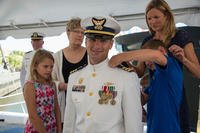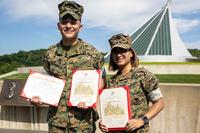The U.S. Army is organized into three main rank groups: enlisted soldiers (E-1 to E-9), warrant officers (W-1 to W-5) and commissioned officers (O-1 to O-10). Each group reflects a different level of responsibility, expertise, leadership and pay.
Enlisted soldiers make up 82% of the Army and get hands-on training, including for any career field that interests them. They perform most of the hands-on work -- from combat roles to technical tasks, logistics, administration and more. As they advance into the noncommissioned officer (NCO) and senior NCO ranks, they become responsible for training, mentoring and managing lower-ranking soldiers.
Warrant officers are highly specialized experts in their technical fields. They typically begin as enlisted soldiers and are selected for their deep knowledge in areas like aviation, intelligence, cyber operations and maintenance. Warrant officers (W-1 to W-5) bridge the gap between the enlisted and officer ranks, often serving as key advisers and technical leaders.
Commissioned officers are the Army's decision-makers and unit commanders. They plan missions, lead troops, manage resources and oversee operations. Officers enter the Army through ROTC, Officer Candidate School (OCS) or the U.S. Military Academy at West Point, New York. Their ranks range from platoon leaders to generals commanding entire divisions.
Jump to:
Army Enlisted Ranks
Enlisted soldiers make up the majority of the U.S. Army and serve as the foundation of its operations. They perform technical, operational and support roles and can advance into leadership and supervisory positions as they rise through the ranks.
Enlisted Army ranks are grouped into three categories: junior enlisted (E-1 through E-4), noncommissioned officers (E-4 through E-6) and senior noncommissioned officers (E-7 through E-9).
Unlike other branches, the Army grants noncommissioned officer status at the grade of E-5. Some individuals may qualify to enlist at an advanced rank based on college credits, participation in Junior ROTC or other factors. The highest advanced rank available through these programs is specialist (E-4).
Army Ranks: Junior Enlisted (E-1 through E-4)
Private (E-1)
Most soldiers begin their Army career at the rank of private (E-1), according to the U.S. Army. This is an entry-level position where individuals are considered trainees. At this stage, soldiers focus on learning Army customs, courtesies and regulations while undergoing Basic Combat Training (BCT) and Advanced Individual Training (AIT) or One Station Unit Training (OSUT), depending on their military occupational specialty (MOS).
There are no insignia worn at this rank, and soldiers are addressed simply as "private." This is a learning phase where adaptation to military life and discipline begins.
Private (E-2)
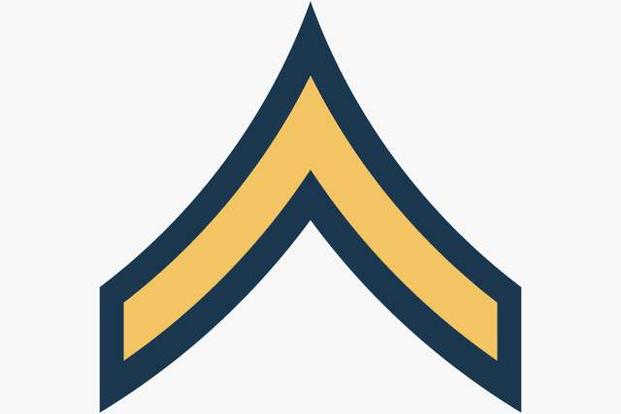
Advancement from E-1 to E-2 is generally automatic after a set time in service (usually six months) and good conduct, assuming BCT has been completed and requirements have been met for minimum time-in-service and time-in-grade.
At this level, soldiers are expected to have a basic understanding of Army standards and to begin contributing to their unit's mission. They continue to train in their MOS and gain hands-on experience.
Private First Class (E-3)
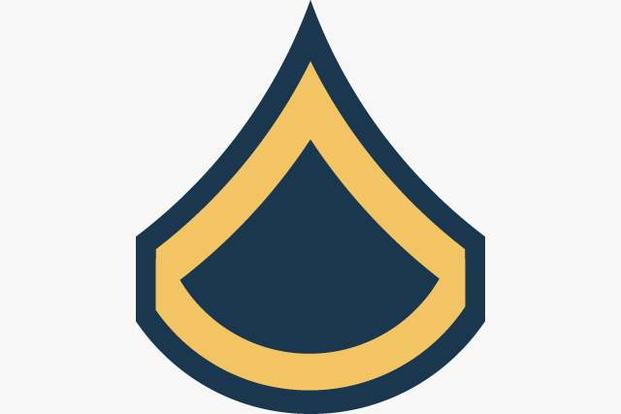
Private first class (PFC) is the next step in the enlisted progression. Most soldiers reach this rank with one year of service and four months time in grade, though those with qualifying college credits, JROTC participation or other enlistment bonuses may enter service at this level.
PFCs are expected to show increasing technical proficiency and a commitment to the Army's values and mission. They often begin taking on more responsibility and play a larger role in team operations.
Specialist (E-4)
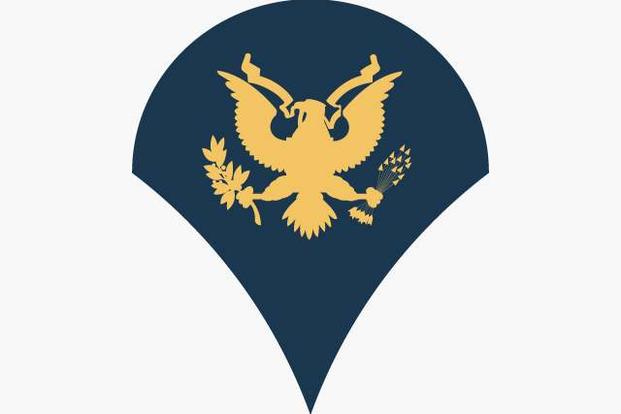
The majority of E-4 soldiers hold the rank of specialist. Specialists are considered skilled in their MOS and are expected to operate with a greater degree of independence.
Although specialists are not NCOs, they may serve in leadership roles depending on unit needs. The promotion from PFC to specialist generally requires two years of service and six months time in grade, though waivers can apply.
Corporal (E-4)

The rank of corporal also exists at the E-4 level but, unlike a specialist, a corporal is a noncommissioned officer. Corporals are appointed based on leadership potential and performance. They often serve as team leaders in smaller units or in combat arms roles. The promotion to corporal typically requires completion of leadership training and a demonstrated ability to supervise others.
Advancing through the ranks: Soldiers advance through the junior enlisted ranks by meeting time-in-service (TIS) and time-in-grade (TIG) requirements, maintaining good conduct and completing required training. Those who excel may be promoted ahead of schedule through waivers or merit-based programs.
Army Ranks: Noncommissioned Officer (NCO) (E-5 and E-6)
Enlisted members at the E-5 and E-6 levels are considered noncommissioned officers (NCOs). These ranks represent the beginning of formal leadership responsibility, and NCOs are expected to uphold the Army's core values while leading, training and mentoring junior soldiers.
"As a commissioned officer, you're not only a leader who guides, problem-solves, and plans for upcoming missions, but you're also empowered to make decisions that can have impact across the globe," according to the U.S. Army.
Army NCOs are the backbone of day-to-day operations and are essential to mission success. They are responsible for instilling discipline, ensuring unit readiness and supporting the command structure through leadership and tactical expertise.
Sergeant (E-5)
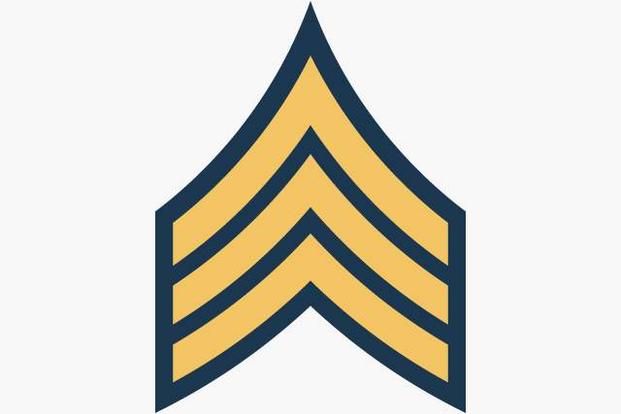
Sergeant (SGT) is the entry point into the NCO corps. Sergeants are typically team leaders and are directly responsible for the training, discipline and welfare of 3-5 soldiers. They serve as the first-line supervisors and are vital to small-unit effectiveness.
Promotion to sergeant requires a combination of time in service (TIS), time in grade (TIG), demonstrated leadership potential and successful completion of the Basic Leader Course (BLC).
Typical promotion timeline:
- Time in service (TIS): At least 36 months (waivable to 18 months)
- Time in grade (TIG): At least 8 months (waivable to 4 months)
- Other requirements: Completion of BLC and recommendation by a promotion board
Sergeants are expected to model Army standards, enforce discipline and lead by example. This rank marks the transition from being led to leading others.
Staff Sergeant (E-6)

Staff sergeant (SSG) is the second level of the NCO tier and typically involves more responsibility and leadership over a squad or section of 8-16 soldiers. Staff sergeants may also serve as platoon sergeants in smaller units.
At this level, NCOs are expected to be tactical and technical experts in their MOS and to mentor junior NCOs and enlisted soldiers. Their focus shifts toward planning, resourcing training and ensuring mission readiness.
Typical promotion timeline:
- Time in service (TIS): At least 84 months (7 years)
- Time in grade (TIG): At least 10 months
- Other requirements: Completion of the Advanced Leader Course (ALC), successful evaluation and board recommendation
Promotion to staff sergeant is based on a combination of performance evaluations, military education, awards, time in grade and service, and input from the promotion board, especially for secondary zones and above.
Promotion process: The Army uses a point-based system known as the Promotion Point Worksheet (PPW) for advancement to E-5 and E-6. Soldiers earn points for factors such as military education and civilian education, awards and decorations, weapons qualification and physical fitness, performance evaluations and board scores. In addition, the Army evaluates soldiers in primary and secondary zones and applies cutoff scores based on MOS and Army needs.
Army Ranks: Senior Noncommissioned Officers (E-7 to E-9)
Army enlisted soldiers in the ranks of E-7 through E-9 are known as senior noncommissioned officers (SNCOs). These leaders are expected to uphold the highest standards of professionalism, leadership and dedication to the Army's mission. They play key roles in training, advising and mentoring junior enlisted personnel and junior NCOs while serving as tactical and operational leaders within their units.
"Senior NCOs are subject matter experts, which is why commanders rely on them to utilize their experience to develop junior leaders from the technical, tactical, and even personal levels," according to "Mentorship: The NCO's Role in Developing Junior Officers," a U.S. Army Cadet Command report.
Senior NCOs are selected based on leadership ability, performance evaluations, military education, experience and centralized board reviews.
Sergeant First Class (Platoon Sergeant) (E-7)
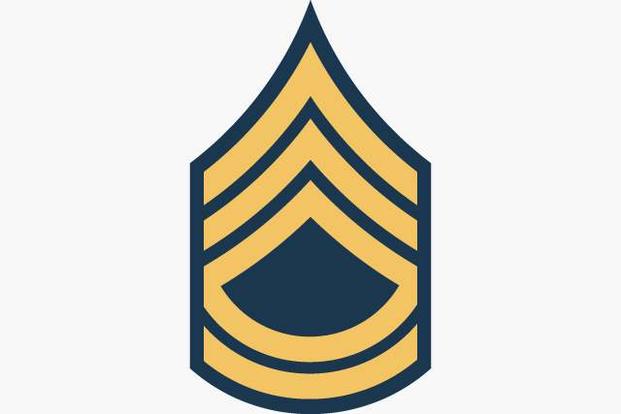
A sergeant first class (SFC) typically serves as a platoon sergeant or section leader. This rank is responsible for the training, discipline and welfare of a platoon of 30 to 40 soldiers and supports the platoon leader, who is usually a second lieutenant.
SFCs are experienced leaders and subject-matter experts in their military occupational specialty (MOS). They are expected to mentor junior NCOs and contribute to mission planning and readiness at the company level.
Promotion requirements:
- Time in service (TIS): Minimum of 6 years
- Time in grade (TIG): Minimum of 36 months
- Other: Selection by a centralized promotion board and completion of the Senior Leader Course (SLC)
Master Sergeant (MSG) (E-8)
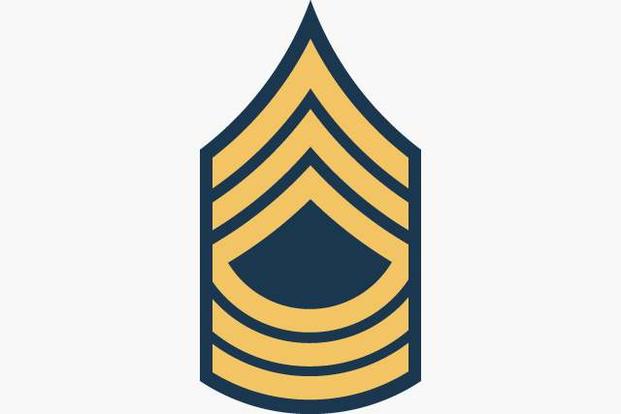
The E-8 paygrade includes two ranks. The master sergeant is the principal NCO at the battalion level, and often higher. They are not charged with all the leadership responsibilities of a first sergeant, but are expected to dispatch leadership and other duties with the same professionalism. MSGs are technical experts and administrators who help plan operations and manage staff activities. They provide senior-level advice and ensure proper execution of policies and procedures.
First Sergeant (1SG) (E-8)
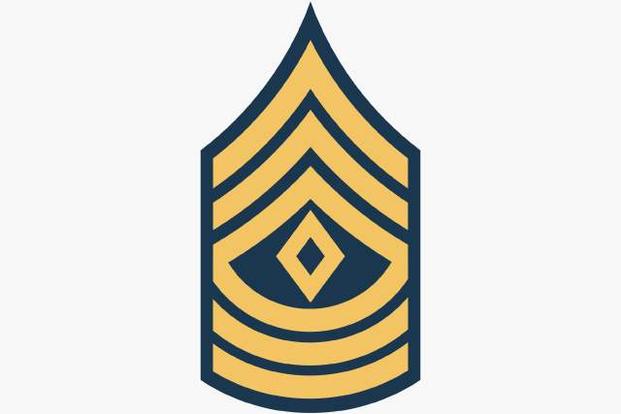
First sergeants serve as the senior enlisted adviser at the company level, responsible for the health, morale, training and welfare of up to 200 soldiers. They work directly with the company commander and are often considered the heart of the unit. First sergeant is not a separate paygrade, but a leadership position given to an MSG based on performance and unit needs.
E-8 promotion requirements:
- TIS: Typically 8-10 years
- TIG: Minimum of 36 months
- Other: Selection by promotion board, strong NCO evaluation reports (NCOERs) and completion of the Master Leader Course (MLC)
Sergeant Major (SGM) (E-9)
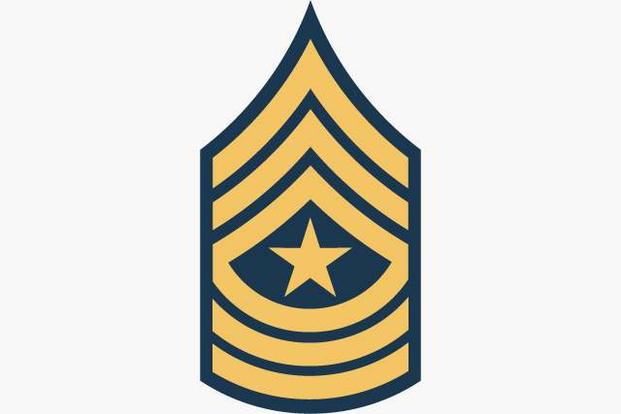
At the E-9 level, there are two primary leadership tracks. Sergeant majors (SGMs) serve as senior enlisted advisers and staff section leaders at the battalion level or higher. They oversee daily operations, training and resource planning, focusing more on staff functions than direct leadership of troops.
Command Sergeant Major (CSM) (E-9)
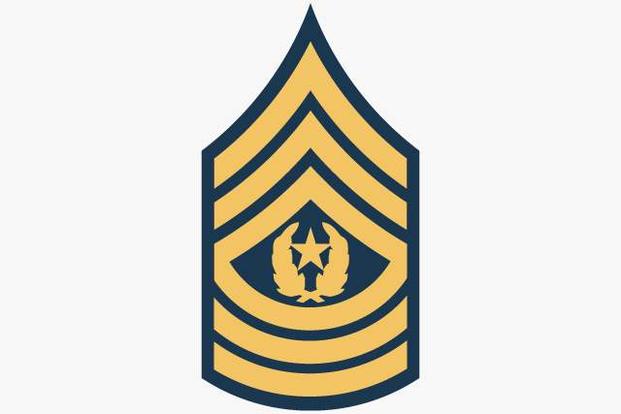
CSMs are the senior enlisted adviser to the battalion, brigade or division commander. They influence policies, advise on personnel matters and ensure the well-being of all enlisted personnel in the command. CSMs are deeply involved in strategic planning and implementation at higher echelons.
Promotion to E-9 is highly selective and requires exceptional performance, strong leadership and proven impact at the unit and organizational level.
E-9 promotion requirements:
- TIS: Typically 12-15 years
- TIG: At least 36 months
- Other: Centralized selection board, exemplary NCOERs and completion of the Sergeants Major Course (SMC)
Sergeant Major of the Army (SMA) (E-9S)
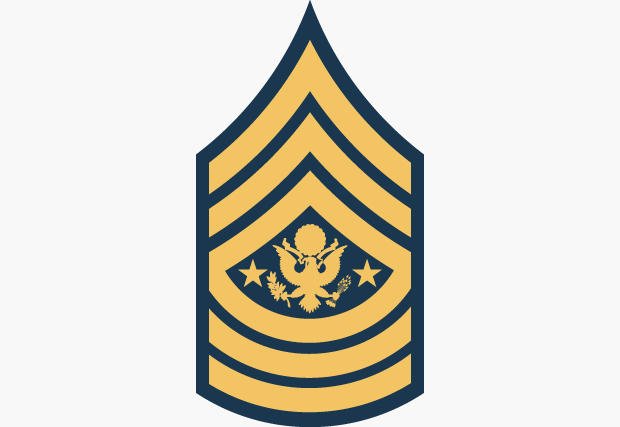
The sergeant major of the Army (SMA) is a unique position, not a separate paygrade, but holding precedence over all other enlisted ranks. There is only one SMA at a time. Appointed by the chief of staff of the Army, the SMA serves as the senior enlisted adviser to the Army's top leadership, representing all enlisted soldiers and advising on matters of morale, readiness, discipline, training and quality of life.
The SMA travels worldwide to assess soldier welfare and represent their interests at the highest levels, including in interactions with Congress and other services.
Promotion Process for SNCOs: Promotion to E-7 through E-9 is centralized and governed by a promotion board. These boards evaluate a soldier's record, including:
- NCOERs (performance evaluations)
- Awards and decorations
- Military education
- Leadership positions held
- Breadth and depth of experience
- Physical fitness and conduct
Cutoff scores and promotion quotas are influenced by the needs of the Army and vary by MOS.
Army Warrant Officer Ranks
Warrant officers are highly skilled specialists who bridge the gap between enlisted and commissioned officer leadership. They hold authority over enlisted ranks and serve as technical experts in areas like aviation, intelligence, maintenance and cyber operations.
"The Army Warrant Officer is a self-aware and adaptive technical expert, combat leader, trainer, and advisor," according to a Warrant Officer Applicant Brief published by the U.S. Army Recruiting Command. "Through progressive levels of expertise in assignments, training, and education, the WO administers, manages, maintains, operates, and integrates Army systems and equipment across the full range of Army operations."
Most warrant officers begin as enlisted soldiers and are selected for their leadership potential and advanced technical expertise. Some aviation warrant officers may be recruited directly from civilian life through the Warrant Officer Flight Training (WOFT) program.
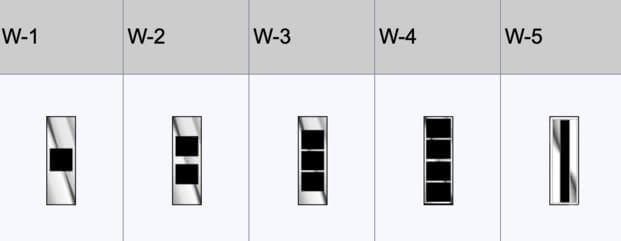
Warrant Officer 1 (WO1)
WO1s are appointed by warrant from the secretary of the Army and serve as technical experts in their field. They are learning to lead and advise within their specialty and may be assigned to direct support or operational roles at the company or battalion level.
Chief Warrant Officer 2 (CW2)
CW2s are commissioned officers who have gained additional experience and responsibility. They provide skilled technical leadership and serve as trusted advisers to commanders. This is the first level where warrant officers are fully commissioned and take on mentorship roles for junior WOs.
Chief Warrant Officer 3 (CW3)
CW3s are senior warrant officers who serve at battalion or brigade levels. They are regarded as advanced technical experts and play a critical role in planning, decision-making and mentoring within their field.
Chief Warrant Officer 4 (CW4)
CW4s are highly experienced officers with broad technical knowledge. They serve in key staff and advisory roles at the brigade and division level. CW4s often influence policy, training and doctrine in their specialty.
Chief Warrant Officer 5 (CW5)
CW5s are the most senior warrant officers in the Army. They serve at the strategic level, advising senior leaders and shaping Army-wide policy and direction within their area of expertise. Promotion to CW5 is highly selective and reflects a career of excellence and service.
Career progression: Warrant officers attend the Warrant Officer Candidate School (WOCS) at Fort Novosel, Alabama, followed by branch-specific technical training. Continued advancement requires professional military education, superior performance and demonstrated leadership. Promotion boards evaluate readiness for each level based on technical skill, experience and leadership impact.
Army Commissioned Officer Ranks
Army commissioned officers, who make up 18% of the service, are responsible for leading troops, planning missions, managing resources and executing operations across all levels of the force. They serve as decision-makers and leaders, shaping strategy and maintaining combat readiness in both peace and wartime environments.
"Commissioned officers are the managers, problem solvers, key influencers and planners who lead enlisted soldiers in all situations," according to the U.S. Army. "They plan missions, give orders and assign soldiers tasks."
Officers in the Army are commissioned through several primary sources: The U.S. Military Academy at West Point; Army ROTC (Reserve Officers' Training Corps); Officer Candidate School (OCS); and direct commissions for specialized professionals such as doctors, lawyers and chaplains.
Army officer ranks are grouped into three categories: company grade officers (O-1 to O-3), field grade officers (O-4 to O-6) and general officers (O-7 and above).
Company grade officers include second lieutenant (O-1), first lieutenant (O-2) and captain (O-3). These officers typically serve as platoon leaders, executive officers and company commanders. They are hands-on leaders who work closely with NCOs and enlisted personnel to train and lead soldiers in day-to-day operations.
Field grade officers (O-4 to O-6) include major (O-4), lieutenant colonel (O-5) and colonel (O-6). These are mid- to senior-level command and staff positions, such as battalion commanders or division-level planners. They manage broader responsibilities, oversee staff sections and influence policy, training and operations.
General officers (O-7 and above) are brigadier general (O-7), major general (O-8), lieutenant general (O-9) and general (O-10). General of the Army is a five-star wartime rank that is rarely used. General officers lead large-scale operations and strategic planning at the corps level and above. They serve as senior decision-makers across the Army and Joint Force, shaping national defense strategy, policy and operations at the highest levels.
Army Officer Ranks: Company Grade Officers (O-1 to O-3)
Second Lieutenant (2LT) (O-1)

Typically the entry-level rank for most commissioned officers. Second lieutenants wear a single gold bar and usually serve as platoon leaders, in charge of 16 to 44 soldiers. They work closely with a platoon sergeant and are responsible for training, readiness and daily operations at the small-unit level.
Forms of address: "Lieutenant" or "Second Lieutenant"
First Lieutenant (1LT) (O-2)

First lieutenants usually have 18 to 24 months of experience as officers. They may continue to lead platoons or serve as executive officers (XOs) of a company-sized unit. Their duties expand to include logistics, planning and staff support to commanders.
They earn more pay and are trusted with more independent decision-making than a second lieutenant.
Captain (CPT) (O-3)

Captains commonly serve as company commanders, leading 60 to 200 soldiers. They are responsible for training, welfare and operational readiness of their units. Captains also serve in staff roles at battalion or brigade level, helping coordinate operations, planning or logistics.
This is a critical leadership rank where officers develop the experience needed for advancement to field grade.
Army Officer Ranks: Field Grade Officers (O-4 to O-6)
Major (MAJ) (O-4)
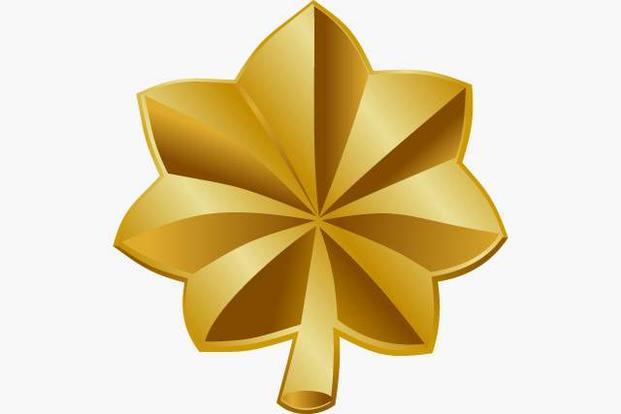
Majors are staff officers at the battalion, brigade or division level. They specialize in planning, intelligence, operations or logistics. In some units, majors may command specialized companies or serve as executive officers to higher commanders.
Majors help coordinate large-scale operations and support decision-making across a range of missions.
Lieutenant Colonel (LTC) (O-5)
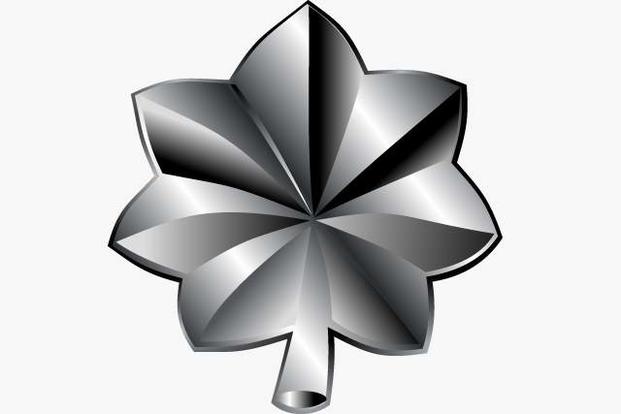
Lieutenant colonels typically command battalions, which consist of 300 to 1,000 soldiers. They are also found in senior staff roles, helping develop policies, manage resources and support brigade-level operations. This is a major leadership and managerial rank that combines tactical experience with operational planning.
Colonel (COL) (O-6)
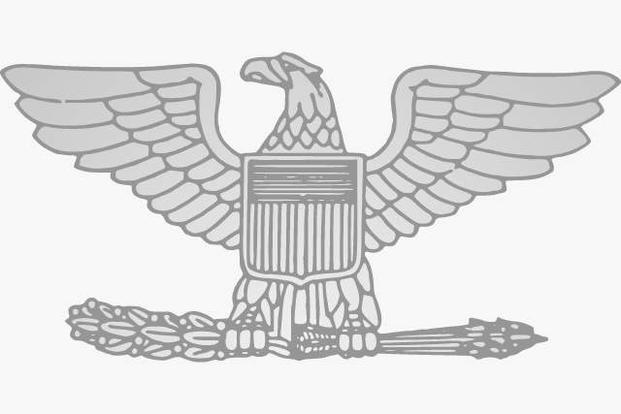
Colonels often command brigades, which are composed of 1,500 to 3,200 soldiers. They may also serve in high-level staff positions within divisions, corps, Army commands or the Pentagon. They're expected to understand strategic objectives and lead with long-range planning in mind. Their roles are central to Army readiness and modernization efforts.
Army Officer Ranks: General Officers (O-7 and Above)
Brigadier General (BG) (O-7)

Brigadier generals serve as assistant division commanders or senior staff officers at high-level commands. They may oversee logistics, training or operations at a corps level or above. Promotion to this rank involves selection by a board of senior officers, nomination by the president and confirmation by the Senate.
Major General (MG) (O-8)

Major generals typically command divisions, which consist of 10,000 to 16,000 soldiers. They are senior leaders responsible for shaping operational plans, setting strategic priorities and overseeing multi-brigade efforts. This rank requires significant experience, proven leadership and congressional confirmation.
Lieutenant General (LTG) (O-9)

Lieutenant generals command corps-level units or serve as deputy commanders of Army-wide commands. They also hold senior staff positions at the Department of the Army, Joint Chiefs of Staff or combatant commands. They are appointed by the president and confirmed by the Senate.
General (GEN) (O-10)

Generals typically serve as chiefs of major Army commands, such as FORSCOM, TRADOC or Army Europe. One general at a time holds the position of chief of staff of the Army, the highest-ranking officer in the service. Generals oversee large-scale strategy, resource management and interservice coordination at the national and international levels.
General of the Army (GOA)

This five-star, wartime-only rank has not been used since World War II. It is reserved for times of total war and is above all other officer ranks.
Army Rank and Insignia
Enlisted Army Ranks
- E-1: Private (PVT) -- No insignia
- E-2: Private (PV2) -- Wears one chevron
- E-3: Private First Class (PFC) -- Wears one chevron and one arc
- E-4: Specialist (SPC) -- Focuses on technical skills, not an NCO
- E-4: Corporal (CPL) -- First NCO rank, holds leadership duties
- Note: E-4 includes two distinct roles
- E-5: Sergeant (SGT) -- Leads small teams, begins NCO leadership path
- E-6: Staff Sergeant (SSG) -- Leads squads or sections, experienced NCO
- E-7: Sergeant First Class (SFC) -- Platoon sergeant, senior NCO at company level
- E-8: Master Sergeant (MSG) -- Senior staff NCO, expert in MOS
- E-8: First Sergeant (1SG) -- Company-level senior enlisted leader, key leadership position
- E-9: Sergeant Major (SGM) -- Senior staff adviser at battalion or higher
- E-9: Command Sergeant Major (CSM) -- Senior enlisted adviser to unit commanders
- E-9S: Sergeant Major of the Army (SMA) -- Senior-most enlisted soldier in the Army, adviser to the chief of staff
Warrant Officer Ranks (W-1 to W-5)
- W-1: Warrant Officer 1 (WO1): Appointed by the secretary of the Army; technical expert and leader in specific MOS.
- W-2: Chief Warrant Officer 2 (CW2): Commissioned officer; serves as a seasoned technician and adviser.
- W-3: Chief Warrant Officer 3 (CW3): Mid-grade warrant officer; provides leadership and mentorship in a technical field.
- W-4: Chief Warrant Officer 4 (CW4): Senior warrant officer; leads at higher command levels and advises on technical policy.
- W-5: Chief Warrant Officer 5 (CW5): Master-level expert; highest warrant officer rank, serves as strategic-level adviser.
Commissioned Officer Ranks
- O-1: Second Lieutenant (2LT) -- Platoon leader, entry-level officer rank
- O-2: First Lieutenant (1LT) -- XO or senior platoon leader, more experienced
- O-3: Captain (CPT) -- Company commander, responsible for 60 to 200 soldiers
- O-4: Major (MAJ) -- Primary staff officer at battalion or brigade level
- O-5: Lieutenant Colonel (LTC) -- Battalion commander or senior staff officer
- O-6: Colonel (COL) -- Brigade commander or high-level staff
- O-7: Brigadier General (BG) -- Deputy division commander or senior staff
- O-8: Major General (MG) -- Division commander, leads 10,000 to 15,000 soldiers
- O-9: Lieutenant General (LTG) -- Corps commander or senior Army staff
- O-10: General (GEN) -- Army-wide leadership, major command or chief of staff
- O-11: General of the Army (GA) -- Five-star rank used only during major wars (currently inactive)
How Promotions Work in the Army
Enlisted Promotions
Enlisted soldiers typically move through early ranks on a set timeline. Private (E-1) is promoted to private (E-2) after six months, then to private first class (E-3) at around one year, and to specialist (E-4) after roughly two years.
Promotion to sergeant (E-5) -- the first NCO rank -- usually happens between three and four years of service. Advancement to staff sergeant (E-6) often follows at six to eight years, with sergeant first class (E-7) around the eight- to 10-year mark. Senior NCO promotions, including master sergeant, first sergeant and sergeant major, are competitive and often take 10-20 years of service, depending on performance, MOS needs and selection board results.
Officer Promotions
Officers generally move from second lieutenant (O-1) to first lieutenant (O-2) in 18-24 months, and then to captain (O-3) after another two years. Promotions to major (O-4) and above are competitive and involve selection boards. These higher ranks are typically achieved between 10 and 22 years of service, based on performance, leadership roles and Army requirements.
"Selection boards recommend those officers who, in the collective judgment of the board, are best qualified for promotion and future service in the Army," according to the U.S. Army Human Resources Command.
Interested in Joining the Military?
We can put you in touch with recruiters from the different military branches. Learn about the benefits of serving your country, paying for school, military career paths, and more: sign up now and hear from a recruiter near you.







